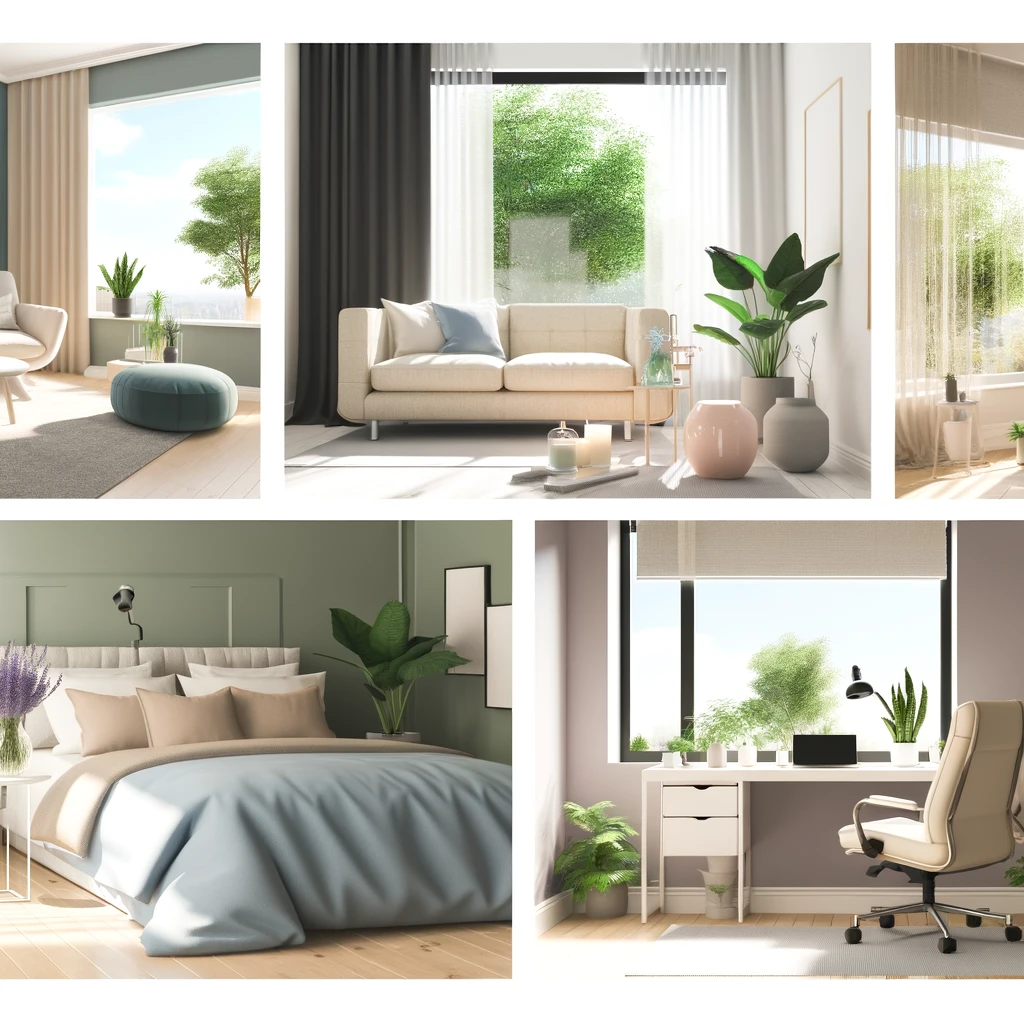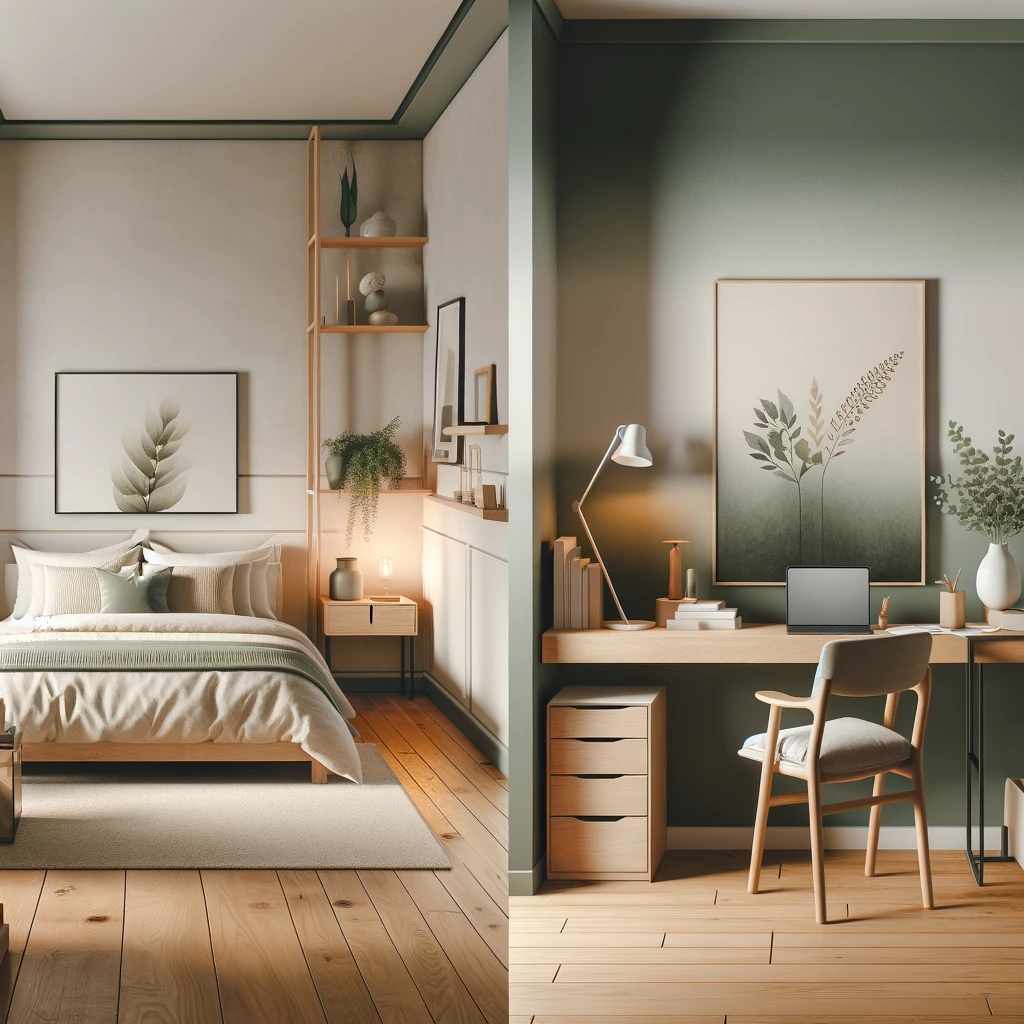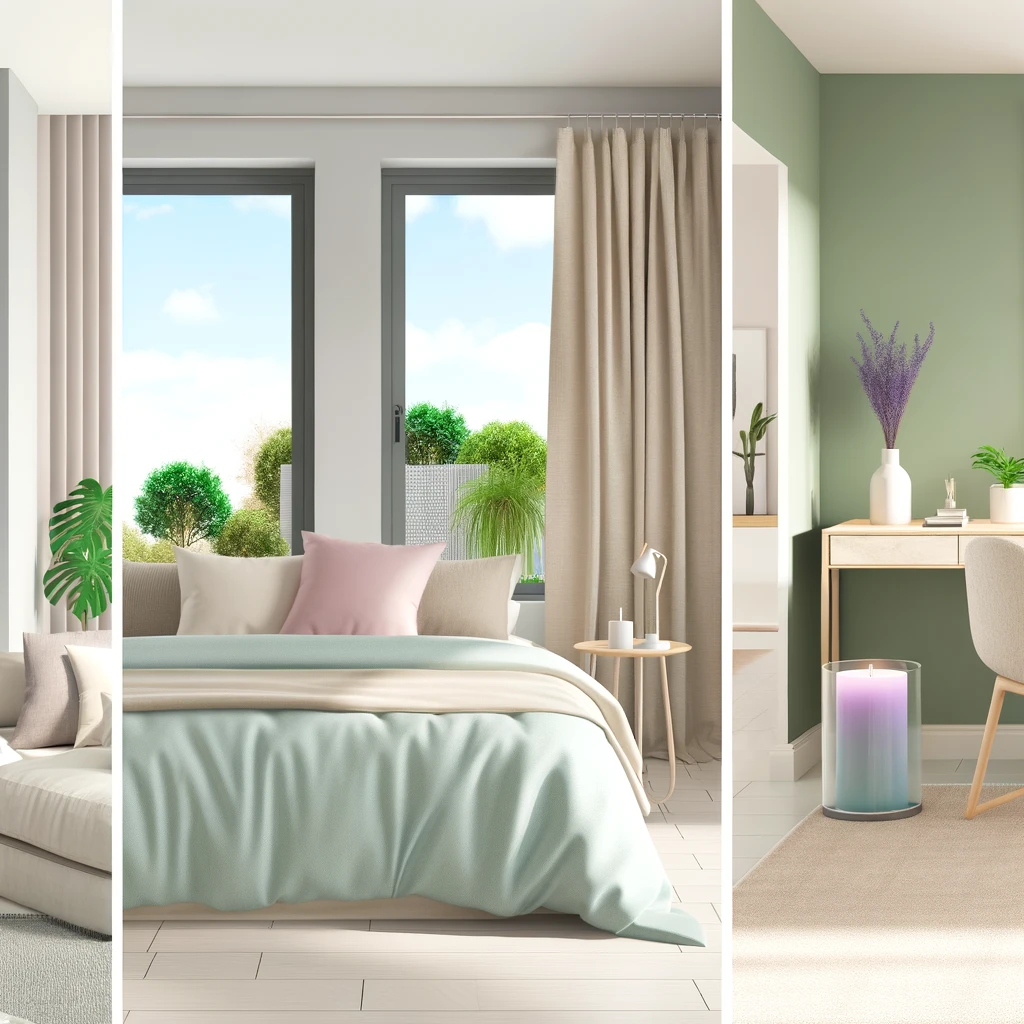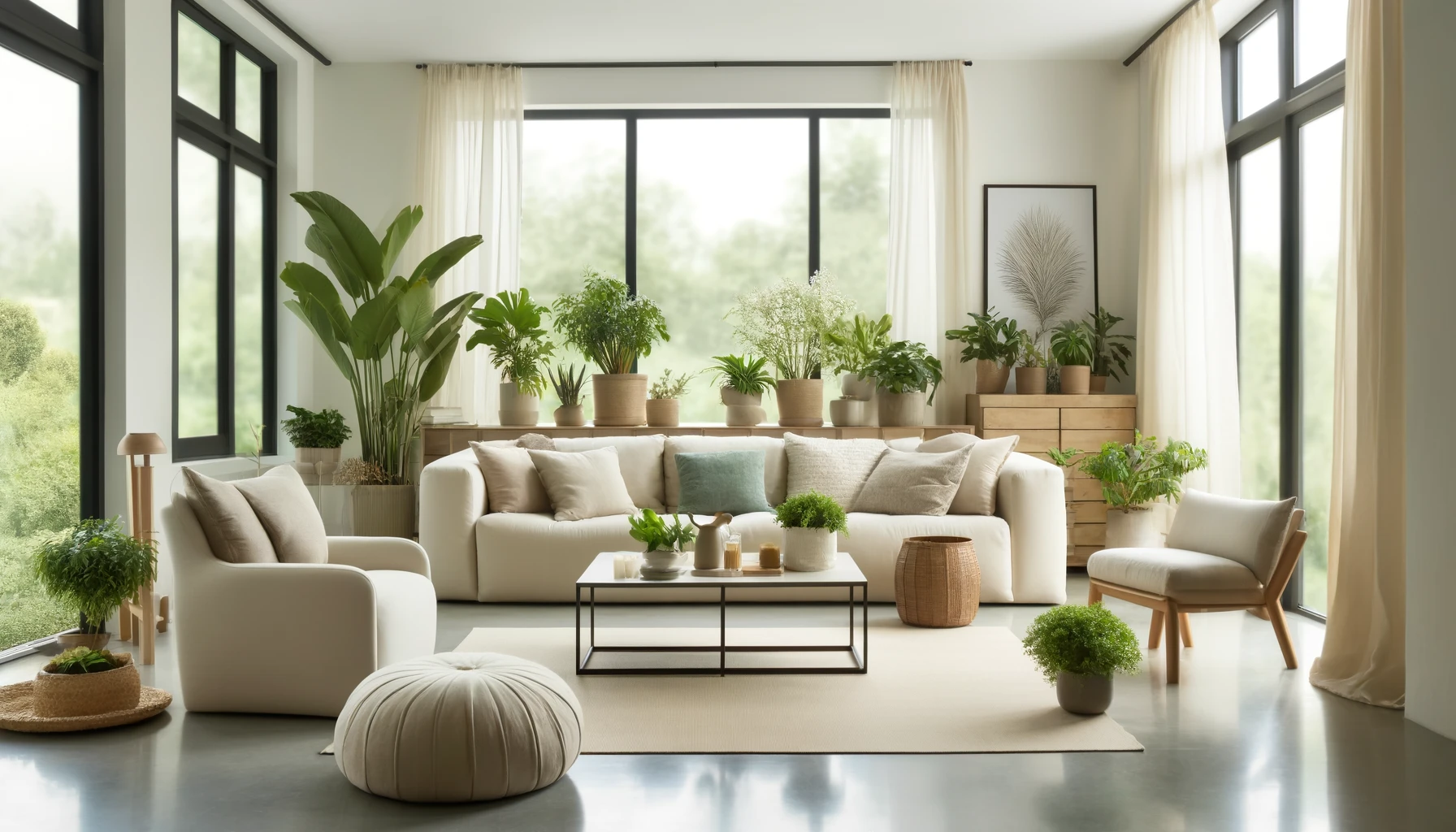The spaces we inhabit play a crucial role in shaping our mental and emotional well-being. We’ll delve into the transformative power of thoughtfully designed environments that not only appeal to the aesthetic senses but also foster a deeper sense of calm and mindfulness.
Imagine entering a room that instantly soothes your senses or a workspace that continually inspires clarity and focus — this is the essence of mindful design. Join us as we explore innovative design strategies that promise to transform ordinary areas into sanctuaries of serenity, offering a much-needed retreat from the chaos of everyday life.

What is Mindful Design?
Mindful design is an approach to interior and architectural design that prioritizes the emotional and psychological well-being of the space’s occupants. It involves selecting colors, layouts, and furnishings that promote calm, comfort, and a connection to the natural world.
Unlike traditional design, which often focuses on aesthetics and functionality, mindful design integrates elements that foster mindfulness and present-moment awareness.
Mindful vs. Traditional Design
Traditional interior design often gets caught up in trends and visual appeal, focusing solely on the surface level. In contrast, mindful design takes a more holistic approach. It’s not just about how a space looks, but how it feels, smells, and even sounds. It’s about creating an environment that engages all the senses and promotes a sense of well-being.
This design philosophy uses space as a tool to influence the occupant’s mental state, reducing stress and increasing peace and productivity. It’s less about impressing visitors and more about personal well-being.
The Impact of Environment on Well-Being
Our environments significantly influence our mood, stress levels, and overall mental health. Cluttered, chaotic spaces can increase anxiety and distractibility. Conversely, spaces designed with mindfulness in mind aim to create a sense of order and tranquility. Incorporating elements such as natural lighting, open spaces, and harmonious colors can dramatically improve one’s mood and mental clarity.
Research suggests that environments with natural elements, minimal clutter, and soothing colors can help reduce stress and improve focus and creativity. Mindful design harnesses these principles to craft spaces that not only look good but also feel good and promote a healthier, more mindful way of living.
Core Principles of Mindful Design
The core principles are more than mere guidelines; they are the foundation for creating environments that resonate with our innermost needs for peace and presence. These principles, ranging from the use of natural elements to the flow of space, work in harmony to evoke a sense of tranquility and mindfulness.
Simplicity and Minimalism
At the heart of mindful design lies the principle of simplicity. This concept is not just about fewer items; it’s about choosing what truly adds value and purpose to a space. Minimalism reduces clutter, both visually and physically, creating a cleaner environment that promotes relaxation and mental clarity. Simple, clean lines and unobstructed spaces allow for free movement and reduce the overwhelm that often comes with excessive décor or furniture.
Natural Elements
Integrating natural elements is a cornerstone of mindful design. Natural light is paramount — it not only saves energy but also enhances mood by boosting serotonin levels, a natural antidepressant.
Incorporating plants into home design not only improves air quality but also provides a visual connection to nature, which is proven to reduce stress and anxiety. Water features like small indoor fountains can be soothing, adding a serene sound backdrop that diminishes noise pollution and enhances a sense of peace.
Choosing Calming Color Schemes
Color significantly impacts psychological and physiological well-being. Mindful вesign favors calming color schemes that evoke tranquility and peace. Soft blues, greens, and earth tones are typically used to foster relaxation and calmness.
These colors are often found in nature and have the ability to decrease heart rate and blood pressure, thereby reducing stress and encouraging a more mindful existence.
The Flow of Space
When designing a space with flow in mind, it’s essential to consider the arrangement of furniture, the openness of the area, and the pathways that connect different zones. The goal is to create a seamless experience that feels both intuitive and freeing, avoiding clutter and disruptions that can lead to sensory overload.
For instance, an open floor plan, where the living, dining, and kitchen areas blend into one another without obstructions, promotes not only a physical but also a visual flow that encourages interaction and accessibility.

Practical Tips for Implementing Mindful Design
Bringing the principles of mindful design into practice requires both creativity and intentionality. In this section, we offer practical tips to help you seamlessly integrate these concepts into your own spaces, whether you’re revamping a room or starting from scratch.
Decluttering: The First Step to Mindful Spaces
Begin your journey to a mindful space by decluttering. Removing unnecessary items clears not only physical space but also mental one. It’s the first step towards creating an environment that allows for relaxation and mindfulness. Adopt a habit of regularly assessing items for their usefulness and emotional value, keeping only what serves a purpose or brings joy.
Furniture Choices: Opting for Simplicity and Comfort
Select furniture that combines functionality with comfort and simplicity. Choose pieces that support the body comfortably and enhance the room’s purpose without overwhelming the space. For instance, a comfortable reading chair with a soft throw can invite relaxation, while a simple desk can promote focus and productivity in a home office.
Sensory Elements: Incorporating Textures That Soothe and Uplift
Texture plays a crucial role in mindful design. It can significantly affect the mood of a room. Incorporate a variety of textures to stimulate the senses gently and add depth and interest to a room. Soft rugs, smooth wooden surfaces, and plush cushions can enhance comfort. Consider elements like soft lighting from lamps or candles to create a warm, inviting glow, further enhancing the serene atmosphere of your mindful space.
Mindful Design in Different Areas of the Home
Mindful design can be adapted to every corner of your home, creating spaces that align with both functional needs and emotional well-being. Each space offers unique opportunities to enhance tranquility and awareness, fostering an environment where every room nurtures the soul.
The Living Room: Creating a Space for Relaxation and Social Connection
The living room serves as the heart of the home, a place for relaxation and gathering. Emphasize comfort and calm by selecting soft, plush seating that invites people to sit down and unwind. Opt for a neutral color palette with pops of green from indoor plants or soft blues to enhance tranquility.
Limit electronic distractions by creating a designated area for televisions and devices, encouraging face-to-face interaction and mindfulness. Utilize soft, layered lighting to accommodate various activities, from reading to social gatherings, thereby creating an adaptable and welcoming environment.
The Bedroom: Designing for a Peaceful Night’s Sleep
A bedroom should be a sanctuary optimized for rest and rejuvenation. Choose a calming color scheme, such as pastel blues, greens, or soft earth tones, to set a restful tone. Invest in high-quality bedding and consider blackout curtains to encourage uninterrupted sleep.
Keep decorations minimal and ensure that every item has a purpose or brings joy, reducing chaos and promoting a clear mind at bedtime. Introduce aromatic elements like lavender-scented candles or diffusers to aid relaxation and sleep.
Workspaces: Enhancing Focus and Calm in Home Offices
In designing a workspace, mindfulness can enhance focus and reduce stress. Start with a clutter-free desk, keeping only essential items to minimize distractions. Choose ergonomic furniture to promote physical comfort and prevent strain over long working hours.
Integrate natural elements such as plants or a small water feature to reduce stress and enhance creativity. Opt for a color palette that includes soft greens and blues, known for their calming effects and ability to enhance concentration.

Incorporating Mindfulness into Everyday Living Spaces
Incorporating mindfulness into your everyday living spaces goes beyond aesthetics; it’s about crafting environments that resonate with your daily rhythms and promote mental clarity. Discover how subtle changes can profoundly impact your sense of peace and focus throughout the day.
Creating Mindfulness Nooks
Even the smallest spaces can be transformed into mindfulness nooks. Identify a corner or a small area in your home where you can set up a comfortable chair, a small table, and perhaps a bookshelf. Add a soft throw, a cushion, and a small lamp to create a cozy reading or meditation spot. This dedicated space can become a personal retreat for moments of reflection or a pause from the day’s hustle.
Balancing Aesthetics and Functionality
Mindful design prioritizes both aesthetics and functionality, ensuring that beauty and utility are not mutually exclusive. Choose furniture and decor that are both visually pleasing and practical. For example, opt for storage solutions that are decorative as well as functional, like beautifully crafted baskets or elegant shelving units. This balance creates a space that is not only functional but also emotionally uplifting.
Maintaining a Mindful Home Environment
To maintain a mindful home, it’s important to regularly reassess and realign your space with your well-being in mind. Dedicate time each week to declutter and clean, keeping your space tidy and serene.
Practice mindfulness rituals like lighting candles or incense to mark the transition from work to relaxation. Finally, continuously evolve your space as your needs change, allowing your home to be a true reflection of your journey toward mindfulness.
Cultivating Peace Through Mindful Design
Embracing mindful design in your home is more than a commitment to aesthetic improvement — it’s a journey toward enhancing your overall well-being. Each room, each nook, and each design choice contributes to a sanctuary that nurtures peace, joy, and presence.
As you integrate these principles, remember that mindful design is not a one-time task but an ongoing process that evolves with your lifestyle and needs. We encourage you to take these ideas, adapt them to your personal style, and watch as your home becomes a profound source of daily tranquility.
We hope this guide inspires you to create spaces that are not only beautiful and functional but also deeply resonant with your quest for a calmer, more mindful life. Share your experiences and the transformations in your home with us, as every change is a step towards a more mindful and fulfilled existence.

Leave a Reply